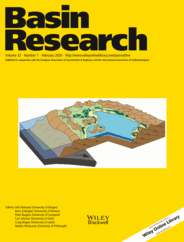
Full text loading...
Igneous sills and laccoliths emplaced in sedimentary basins may significantly impact petroleum systems, both positively and negatively. Igneous intrusions provide heat to maturate regionally immature organic‐rich host rocks, act as fractured reservoirs hosting commercial accumulations of hydrocarbons, and form structures affecting fluid flow and trapping at different scales. Nevertheless, the petrophysical implications of igneous intrusions on their host rock are poorly known. In this study, we analyse 200 wells in the Río Grande Valley oil field, Neuquén basin, Argentina, where the main reservoirs are in fractured igneous sills. This dataset represents a globally unique possibility to characterize the igneous–host rock interaction using both wireline logs and core material. We identify a systematic Contact Low Resistivity Zone (CLRsZ) at both the upper and lower contacts of the sills emplaced in the organic‐rich Vaca Muerta and Agrio Formations. We characterize the nature of these CLRsZ and their petrophysical properties by integrating resistivity and gamma ray well logs, petrographic analyses, petrophysical tests and geochemical analyses. The low resistivity signal of the CLRsZ is dominantly carried by massive‐sulphide deposits, mainly pyrite, observed both in the host rock and the chilled margin of the sills. Well log images and porosity‐permeability analysis on core plugs show that both the sills and their associated CLRsZ can act as carrier for fluid flow and reservoir for hydrocarbons storage. The thickness of the upper and lower CLRsZ correlates linearly with the thickness of the sill, and the volume of both the upper and lower CLRsZ represents ca. 40% with respect to the volume of their associated sill. The thickness of the CLRsZ represents ca. 13% of the thickness of contact aureole induced by the sills. In the CLRsZ, a great proportion of kerogen was transformed to hydrocarbon, so that CLRsZ were restricted to the innermost contact aureole of the sills. Our results show that the CLRsZ can have major implications on fluid flow and should be considered in reservoir models in volcanic basins hosting sills emplaced in organic‐rich formations.
,Low resistivity zones identified at contacts of sill intrusions emplaced in organic‐rich shale formations have major implications in fluid flow and petroleum systems.

Article metrics loading...

Full text loading...
References


Data & Media loading...

